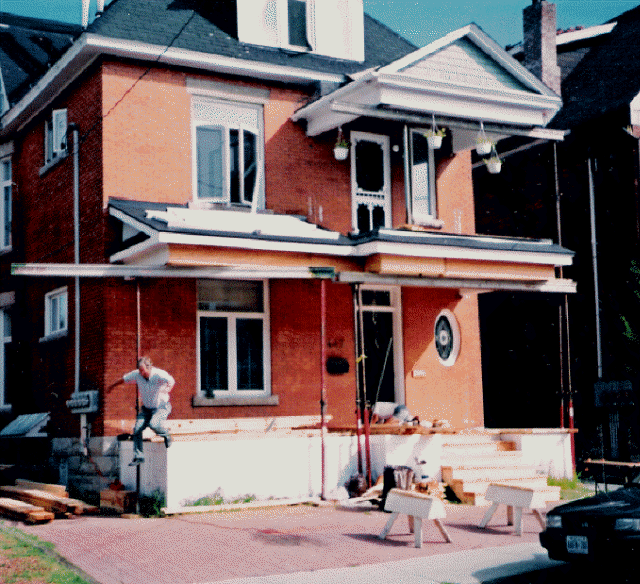
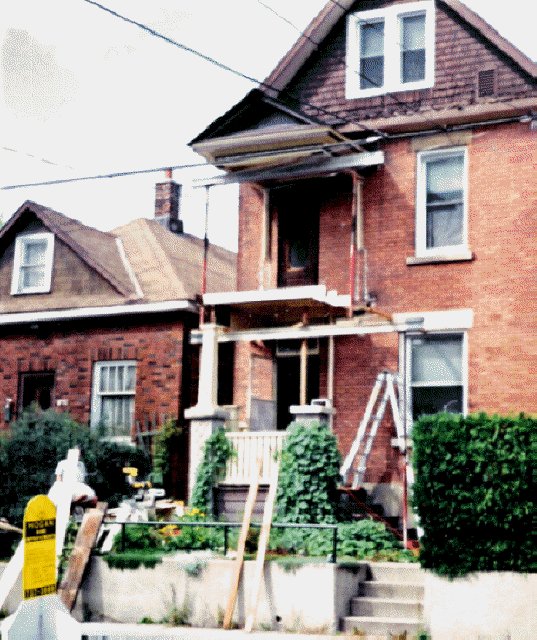
Porch Photos
Before


After
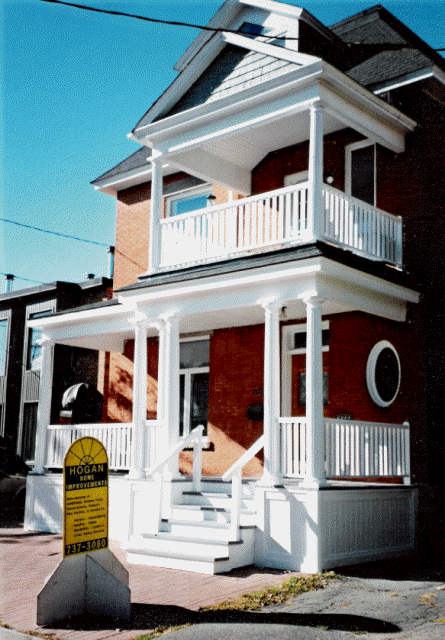
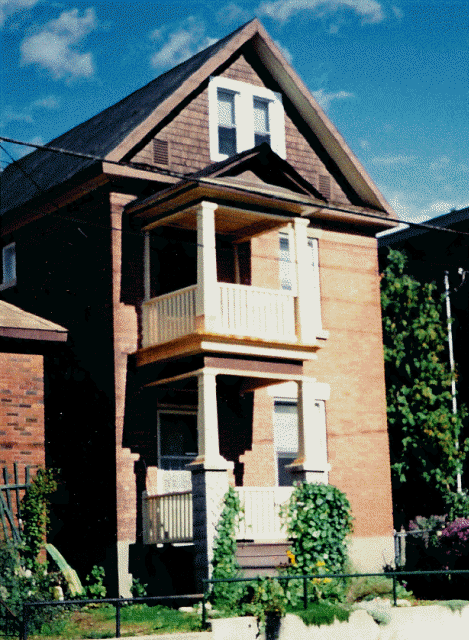
Progress Photos of a Porch Repair
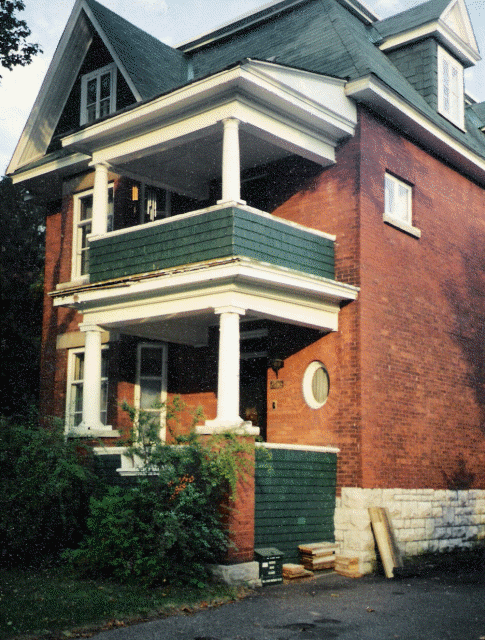
The customer wanted the gables of the shed roof to be shallow because of nesting pigeons. You can see that he has installed plywood over it's gables, which doesn't look nice. He also wanted to have an enclosed balcony with round columns on the outside but square corners on the inside. He wanted to save the cedar shake siding.
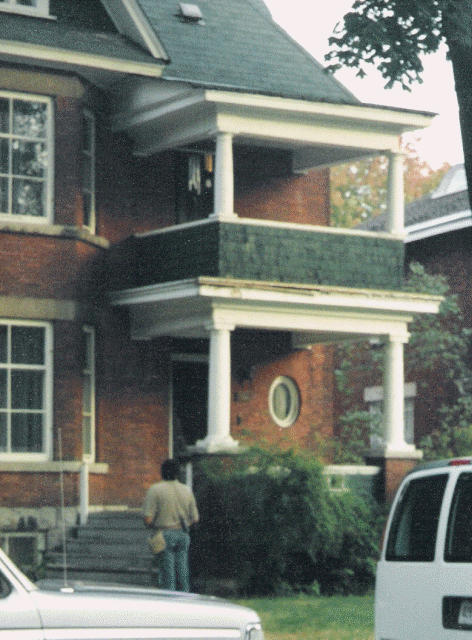
The problem of water from the main roof was never addressed properly and water entered the flat roof at the top under the valley, followed the underside of the rafters to the front beam and then dripped down through both left columns. You can see how the structure sags on the left side. The customer wanted to enclose the balcony with windows that matched the style of the main house and he wanted to have the stairs replaced with heavier newel posts and balustrades in keeping with the age of the house.
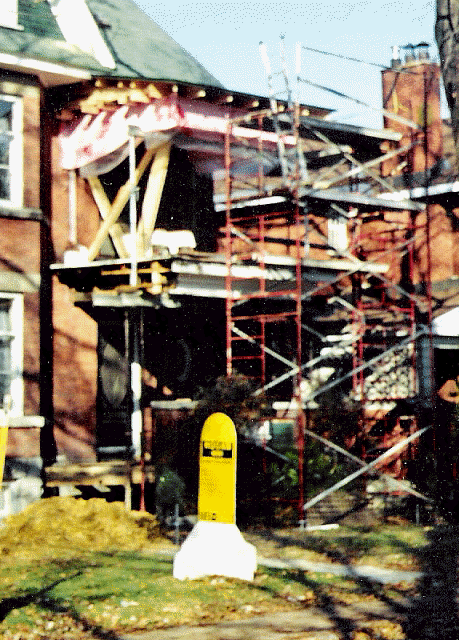
The customer decided to start the project at the beginning of October, however, it took 2 months to receive the columns ordered when 3 weeks was expected. We erected scaffolding and began to work from the roof down. You can see the straw on the ground where we knew we would have to dig pilings for the stairs. The balcony is supported on Aluminum beams held up by adjustable shoring jacks. These in turn hold up the aluma-beam and jacks supporting the roof. These allow us to be able to level the structure safely while the scaffolding allows easy access. You can see how delicate flowers can become damaged if left near the renovation.
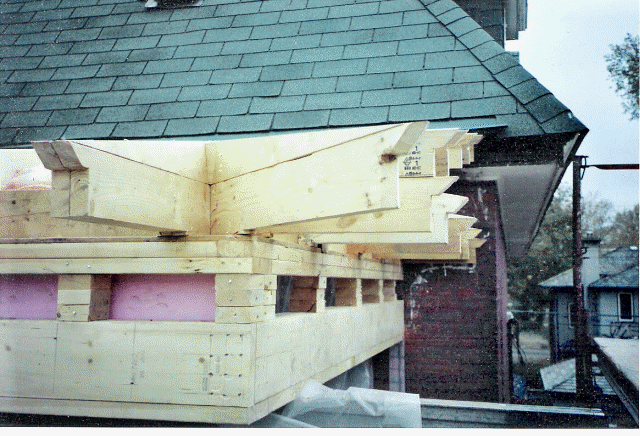
We reframed the roof with new material. We managed to keep 3 of the origional rafters and all the tounge and groove ceiling boards. Note how the rafter tails are precut for the crown moulding and fascia. Pay special attention to the raftertail installed at the corner with the compound angles. This detail is usually to difficult for most carpenters to figure out, so the board is usually left out completely and the fascia boards are only nailed to each other. The lack of this support at the corners is why most of the older rooves you see have their corners opening.
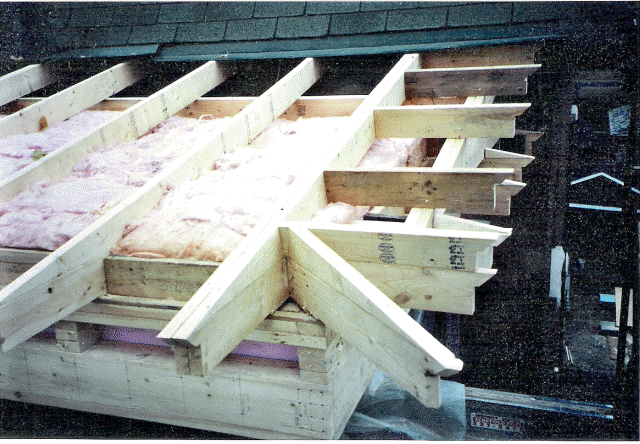
The balcony roof is insulated. Notice the rafter tails are nailed to a doubled rafter.
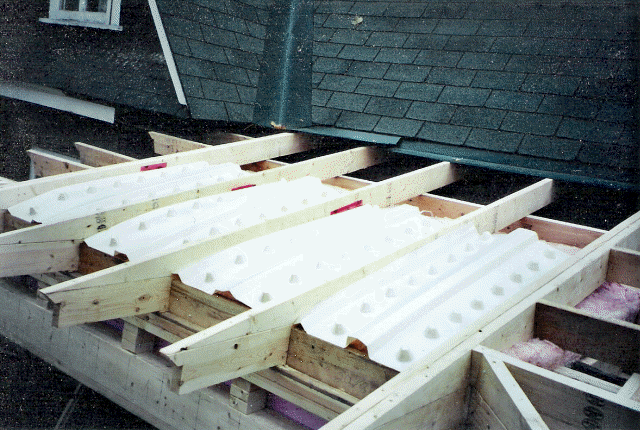
Rafter baffles are installed over top to maintain proper ventilation.
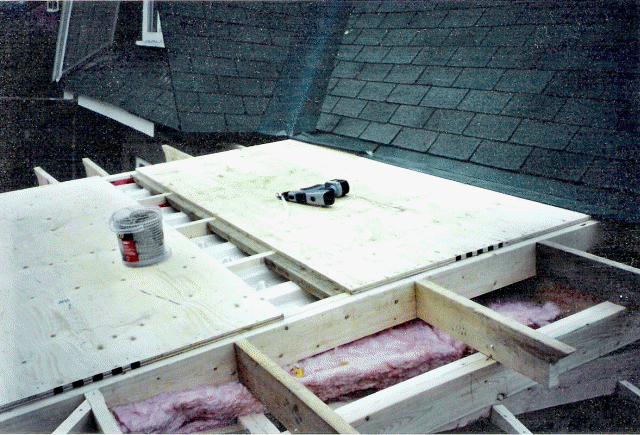
3/4 inch plywood is screwed down to the joists. Note the edges are supported on blocking rather than using H-clips.
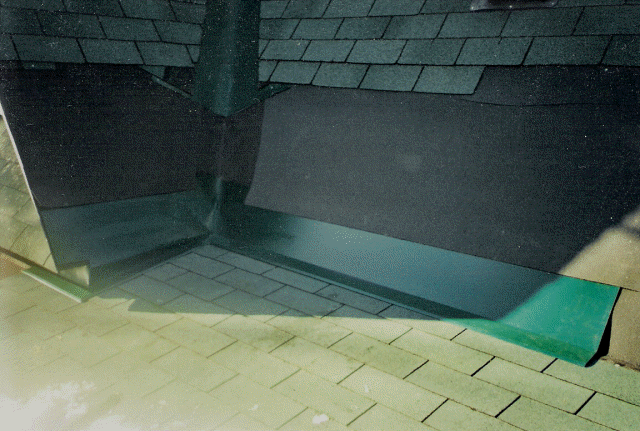
Metal drip flashings are installed around the perimeter of the roof. Then Ice and water sheild is installed over the entire balcony roof and up the main roof before the balcony roof is shingled. After this, wall step flashings and counterflashings are installed.
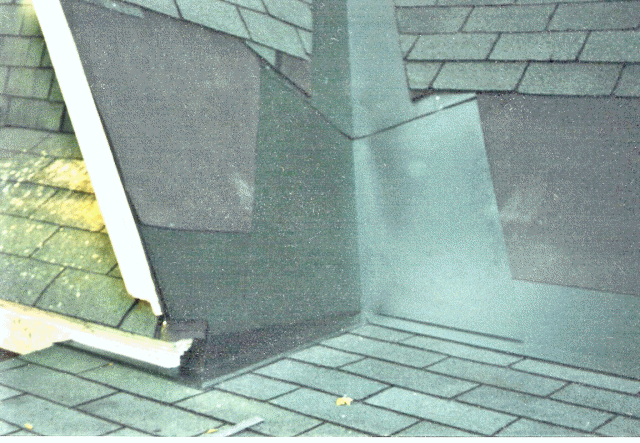
The valley flashing is extended.
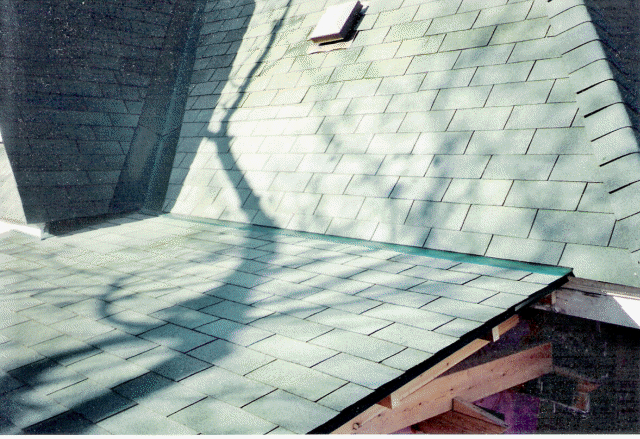
The main roof shingles are replaced.
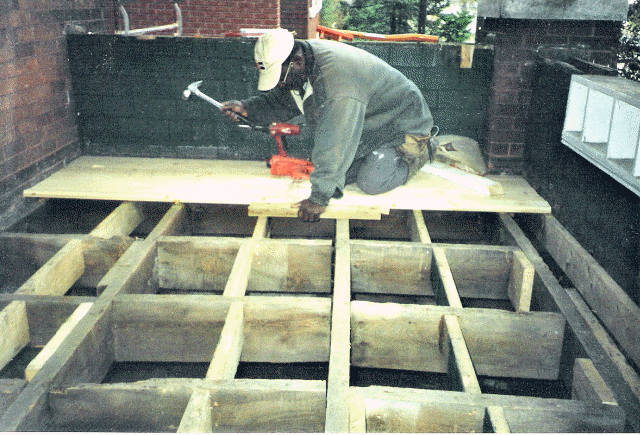
The entrance framing is repaired and the floor is installed.
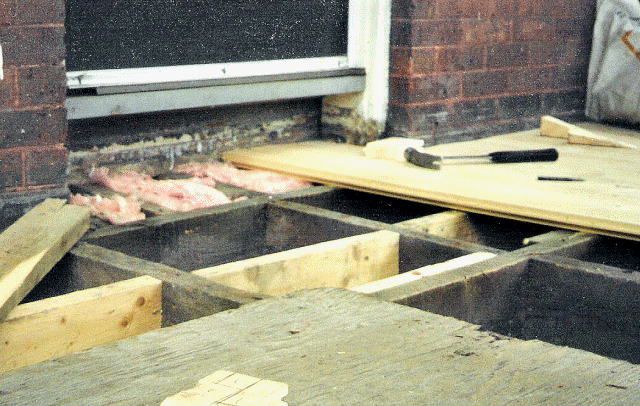
We insulated under the entrance where it was inaccessable from inside.
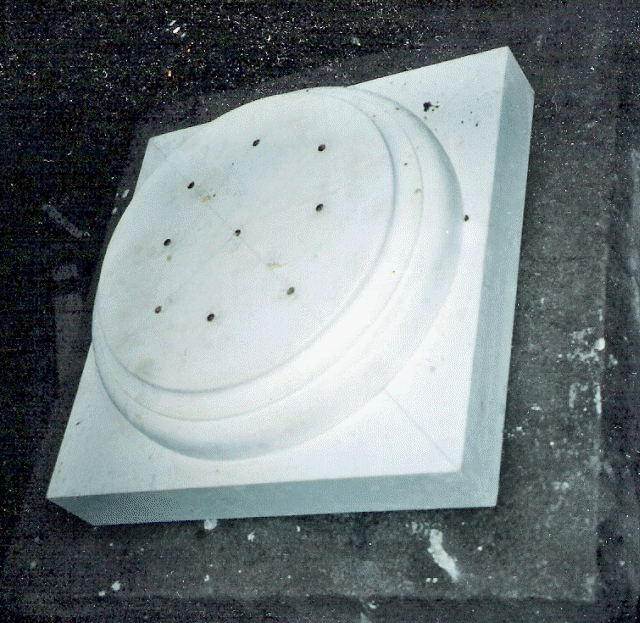
The column capitals are primed and assembled. Note the copper nails. Should the customer neglect the caulking in the future and water should get between the pieces of wood, the copper nails will oxidise. The oxidised copper will act as a fungicide killing all the plants that would otherwise want to grow there. Without the funguses rotting the wood the most that can happen is the wood gets wet and then dries out.
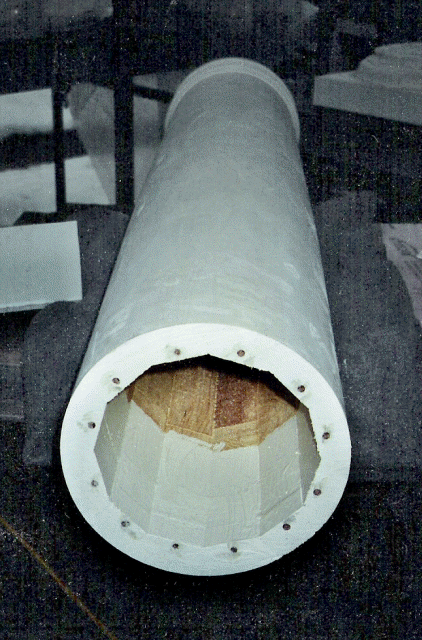
The columns receive the same treatment.
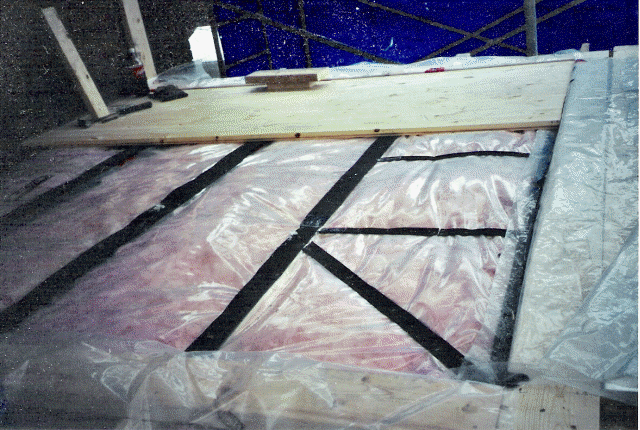
The balcony floor is insulated, covered with vapour barrier, and then the flooring is installed. The vapour barrier will be continuous with the wall vapour barrier. The black strips are ice and water shield used to seal the nail holes through the vapour barrier. It is not nearly as messy as acoustical caulking.
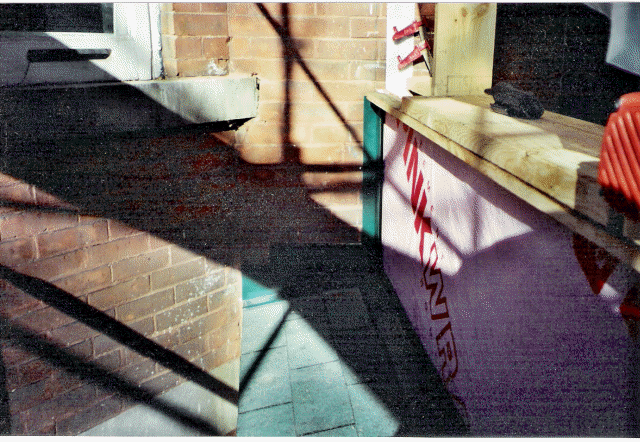
The architectural roof that decorates the perimeter of the balcony floor is installed with step flashings that are concealed with a counterflashing that is embedded into the mortar of the brick wall. A wind barrier, the pink material, is installed over the wall. The wall flashing overlaps the roof counterflashing and the vertical wall flashing overlaps both of the other flashings. Counterflashings add a crisp finished look to the completed work.
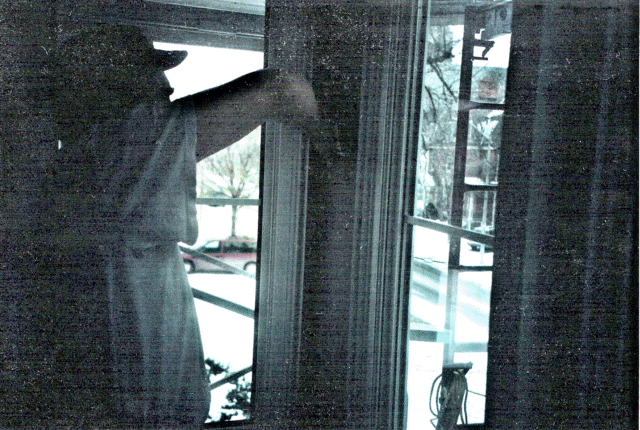
After the windows are installed and the casings put on, the room is painted, the floor is sanded and then finished.
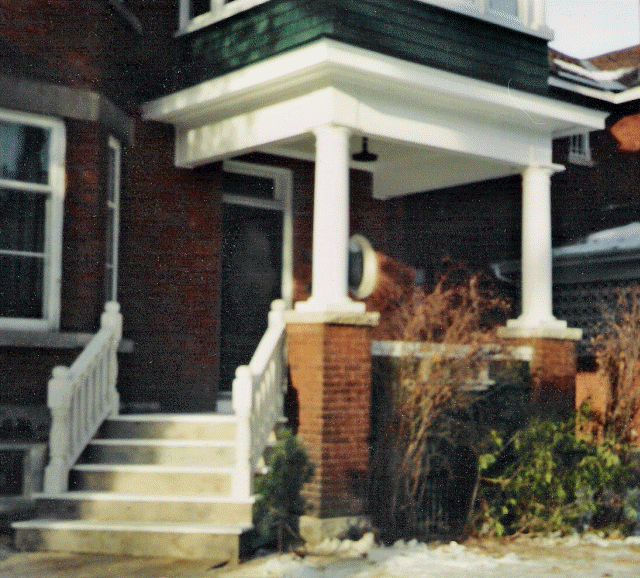
The stair is installed with the heavier newels and balustrade. The newel starts one step up at the customerís request to allow easier snow clearing. By having it higher it also reduces the amount of cantilever someone can exert on the post.
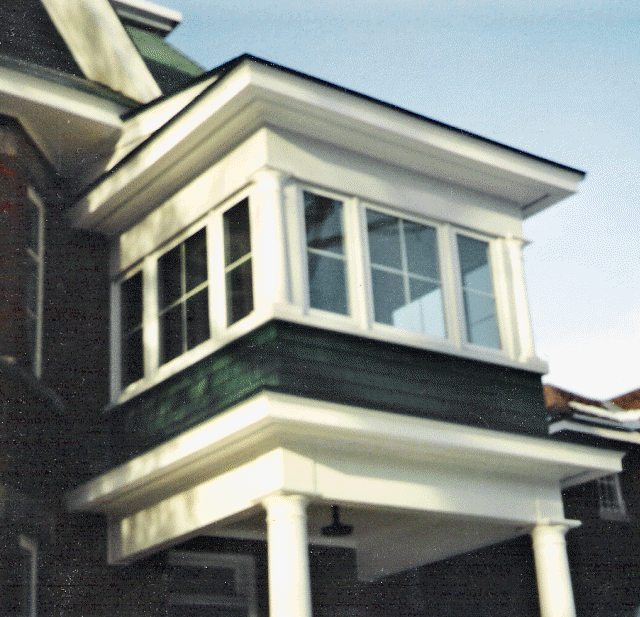
The soffits on the 2 rooves were made with tounge and grove 3 inch wide boards that are similar to those of the main roof. In the middle is a 1-1/2 inch wide aluminium air vent that blends in nicely. If you look closely you can see that all the column capitals above the columns are covered with a tin flashing to prevent water from getting to the inside of the columns by rotting through the upper capitals.
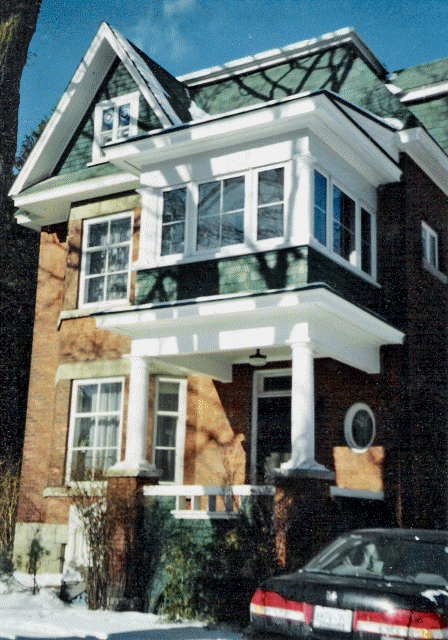
See how nice the windows blend with the existing windows on the house. Also how nice the roof gables look now with a crown moulding.
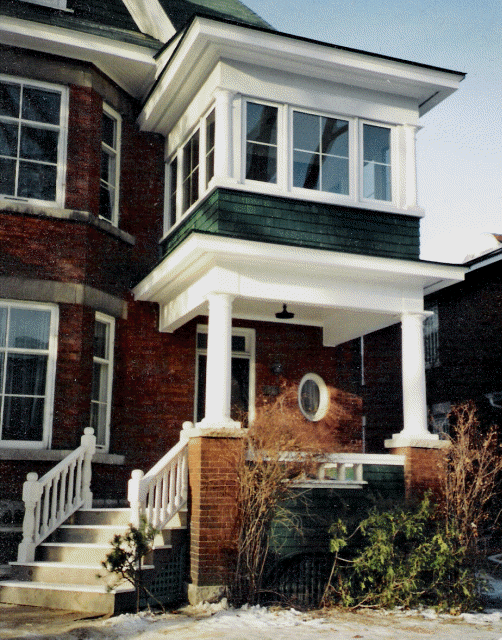
The window sills are the same height as the house and the top of the window matches the 2nd mullion of the house windows. The lattice under the stairs matches the existing. The wood was only primed white. The customer hired a professional painter to paint it the next Spring.